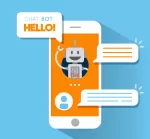In today’s digitally driven world, user engagement reigns supreme as the ultimate metric of success for any online platform. Beyond attracting initial visitors, true success hinges on captivating their interest and retaining their attention. It’s about forming a connection that turns casual visitors into loyal customers and advocates. In this blog, we’ll embark on a journey to uncover how the integration of Generative Artificial Intelligence (AI) is not just transforming but elevating the strategies for enhancing user engagement, reaching unprecedented levels.
The Crucial Role of User Engagement

User engagement is not just a buzzword; it’s the lifeblood of a digital presence. High levels of user engagement are directly linked to increased revenue, improved brand reputation, and an amplified online footprint. Engaged users tend to stick around longer, share content, and provide invaluable feedback, making them the cornerstone of a flourishing digital venture.
Generative AI: The Ultimate Game-Changer
Generative AI, powered by cutting-edge machine learning algorithms, stands as a monumental game-changer in the relentless pursuit of bolstering user engagement. At its core, it’s about harnessing the prowess of AI models to craft content that is not only dynamic but deeply personalized, thereby forging an unparalleled connection with each user.
Personalized Content Curation:
Generative AI’s prowess in enhancing user engagement shines brightly through personalized content curation. These AI models meticulously dissect user data, encompassing browsing history, preferences, and behavioral patterns, to craft content that resonates with laser-like precision. Whether it’s tailor-made product recommendations, bespoke articles, or precisely honed marketing messages, the content speaks directly to the user’s interests, catalyzing a remarkable surge in engagement.Dynamic User Interfaces:
Beyond content, Generative AI has the ability to reshape the very fabric of digital platforms. It can ingeniously conjure up user interfaces that fluidly adapt to the nuanced preferences of individual users. Picture this: layouts morphing, color palettes shifting, and menu options seamlessly rearranging themselves, all based on the user’s real-time behavior. The result is an experience that is not just personalized but utterly captivating.Real-time Conversations:
In the realm of user engagement, real-time conversations reign supreme, and Generative AI is the crown jewel. Chatbots and virtual assistants, driven by this AI marvel, offer users instantaneous responses to queries and proactive assistance in navigating the platform. This level of responsiveness isn’t just convenient; it’s a recipe for user satisfaction and sustained engagement.Gamification and Interactive Elements:
To infuse an extra layer of allure, Generative AI can be enlisted to craft interactive and gamified content. Think quizzes, polls, or personalized games that go beyond mere engagement, actively encouraging users to invest more time and energy into the platform.
Challenges and Prudent Considerations
While Generative AI holds the promise of a user engagement utopia, it comes packaged with a set of challenges and considerations that demand our attention:
Data Privacy and Security :
Challenge:
The ethical collection and use of user data for personalization require utmost care to safeguard privacy and security.Consideration:
Compliance with data protection regulations is non-negotiable to maintain user trust and data integrity.
Ethical Content Creation:
Challenge:
AI-generated content must strictly adhere to ethical guidelines to prevent the spread of misinformation, bias, or harmful content.Consideration:
Ensuring ethical content creation is not just a moral obligation but a necessity to maintain credibility and trust.
Implementation Complexity:
Challenge:
The seamless integration of Generative AI into your platform can be a complex endeavor that demands a blend of strategy and technical expertise.Consideration:
It’s imperative to assemble a proficient team capable of both implementation and sustained management of these AI systems.
Continuous Learning and Adaptation:
Challenge:
Generative AI models require continuous learning and fine-tuning to remain effective and relevant.Consideration:
This ongoing process necessitates dedicated investment in terms of time and resources.
Usage of Generative AI in different industries
How generative AI is being used to enhance user engagement in different industries:
E-commerce:
Generative AI is being used to create personalized product recommendations, generate realistic product images, and even write product descriptions. This can help businesses to improve the customer experience and increase sales. For example, Amazon is using generative AI to create personalized product recommendations for its customers. The company has trained a machine learning model on a massive dataset of customer purchase history, product reviews, and other data. This model can then predict which products are likely to be of interest to each individual customer.
Customer service:
Generative AI is being used to create chatbots that can answer customer questions and resolve issues more quickly and efficiently than human agents. This can free up human agents to focus on more complex tasks, and it can also improve customer satisfaction. For example, HSBC is using generative AI to create chatbots that can answer customer questions about its products and services. The chatbots are trained on a massive dataset of customer interactions, so they can understand the nuances of customer language and provide accurate and helpful answers.
Marketing:
Generative AI is being used to create personalized marketing campaigns, generate creative content, and track the effectiveness of marketing campaigns. This can help businesses to reach their target audience more effectively and improve their ROI. For example, Coca-Cola is using generative AI to create personalized marketing campaigns for its customers. The company has trained a machine learning model on a massive dataset of customer data, including demographics, purchase history, and social media activity. This model can then predict which marketing messages are likely to be most effective for each individual customer.
Education:
Generative AI is being used to create personalized learning experiences, generate interactive content, and assess student learning. This can help students to learn more effectively and efficiently. For example, Pearson is using generative AI to create personalized learning experiences for its students. The company has developed a machine learning model that can track each student’s progress and identify areas where they need additional help. The model can then generate personalized learning activities that are tailored to each student’s individual needs.
Entertainment:
Generative AI is being used to create new forms of entertainment, such as virtual reality games and augmented reality experiences. This can provide users with more immersive and engaging experiences. For example, Google is using generative AI to create virtual reality games that allow users to explore different worlds and interact with objects in a realistic way. The company has developed a machine learning model that can generate realistic 3D models of objects and environments.
The Transformative Power of Generative AI
These are just a few of the many ways that generative AI is being used to enhance user engagement. As the technology continues to develop, we can expect to see even more innovative and creative applications of generative AI in the years to come. Generative AI is being used to create more,
- Realistic and personalized avatars for online gaming and social media. This can help users to feel more immersed in the experience and to connect with others on a deeper level
- Engaging and interactive content for e-learning platforms. This can help students to learn more effectively and to retain information better.
- Personalized and relevant advertising. This can help businesses to reach their target audience more effectively and to improve their ROI.
- Creative and innovative marketing campaigns. This can help businesses to stand out from the competition and to generate buzz for their products or services.
- Realistic and immersive virtual worlds. This can be used for entertainment, training, or even therapy.
Future prospects and trends
Hyper-Personalization:
Hyper-personalization is a trend that involves creating tailored user experiences at an individual level. In the future, Generative AI will play a pivotal role in achieving this. AI algorithms will analyze vast amounts of user data, including past behavior, preferences, location, and even real-time context, to generate content and recommendations that resonate with each user. Hyper-personalization extends beyond product recommendations. It encompasses the entire user journey, from the content displayed on a website to the timing and content of email marketing campaigns.Real-Time Adaptation:
Real-time adaptation is the ability of digital platforms to adjust their content and interfaces on the fly, based on user interactions and behaviors. This trend will become increasingly prevalent with Generative AI. AI algorithms will continuously monitor user actions and adapt the user interface or content in response. Imagine a news website that dynamically reorganizes its homepage based on a user’s interests and reading habits. This real-time adaptation not only enhances user engagement but also keeps users on the platform longer as they receive content that aligns with their interests.Natural Language Understanding:
The future of user engagement through Generative AI will see significant advancements in natural language understanding (NLU). NLU refers to the ability of AI systems to comprehend and respond to human language in a contextually relevant and natural manner. In the coming years, chatbots, virtual assistants, and AI-powered customer support will become more conversational and human-like. These AI-driven entities will understand not only the literal meaning of words but also the nuances of language, including humor, emotion, and cultural references. This will make interactions with AI-powered systems feel less robotic and more engaging.AI-Generated Creativity:
Generative AI is poised to revolutionize content creation across various industries. AI algorithms are becoming increasingly proficient at generating high-quality written content, images, videos, and even music. This trend will continue to evolve, leading to more creative and engaging content. In marketing, for example, AI can generate compelling ad copy and design eye-catching visuals tailored to specific audience segments. This not only saves time but also ensures consistency in branding and messaging. AI can also assist in content marketing by generating blog posts, articles, and social media updates that are not only informative but also engaging.AI-Enhanced Storytelling:
Storytelling has always been a powerful tool for engaging audiences, and Generative AI is set to take it to the next level. AI algorithms can analyze vast amounts of data to identify trends, themes, and narrative structures that resonate with specific user segments. In the future, AI will assist in crafting personalized stories and narratives that captivate users. For example, in the gaming industry, AI can dynamically generate storylines and quests based on a player’s choices and behavior, creating a unique and engaging narrative experience for each player. In marketing and advertising, AI can help brands tell compelling and personalized stories that connect with consumers on an emotional level. By analyzing user data and preferences, AI can generate narratives that speak directly to the individual’s interests and values, one of the storytelling AI is Charisma.
Conclusion
Elevating user engagement through Generative AI represents not just an evolution but a revolution in the digital landscape. By delivering personalized content, dynamic interfaces, real-time interactions, and interactive content, platforms can forge a deeper, more meaningful connection with users. However, this transformative journey must be approached with a sense of responsibility, ensuring data privacy, ethical AI use, and the ongoing refinement of AI models.
Ready to Learn More?
If you’re intrigued by the possibilities of enhancing user engagement and want to dive deeper into the strategies discussed here, we invite you to explore our detailed blog post by GeekyAnts,
Discover expert insights and practical tips on boosting user engagement in the digital realm. Click here to read the full article.
To learn more about how Generative AI is transforming code development, check out our blog on “Automated Bug Detection and Code Generation with Generative AI.“

























